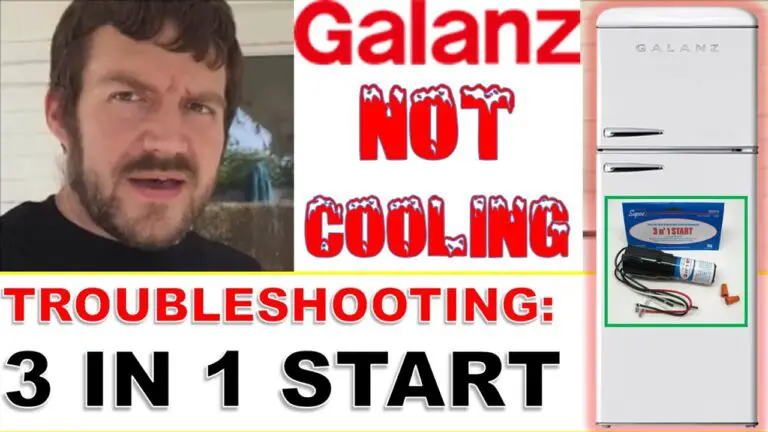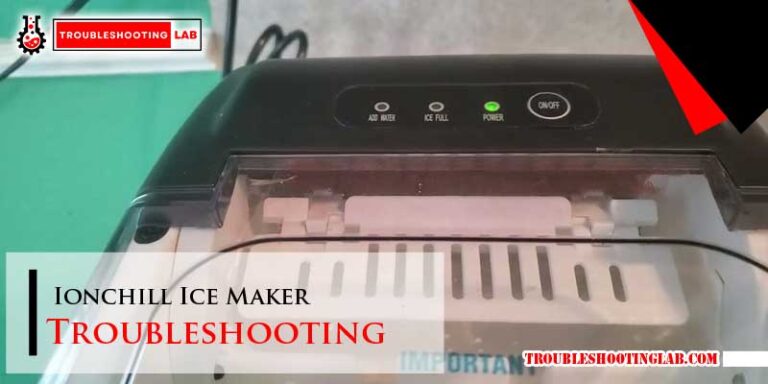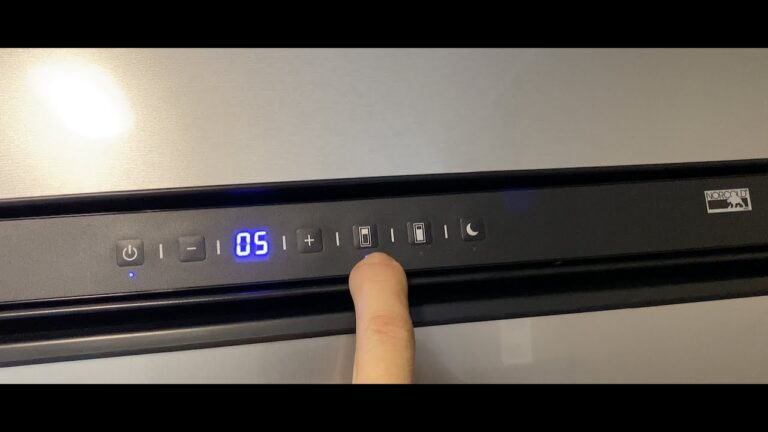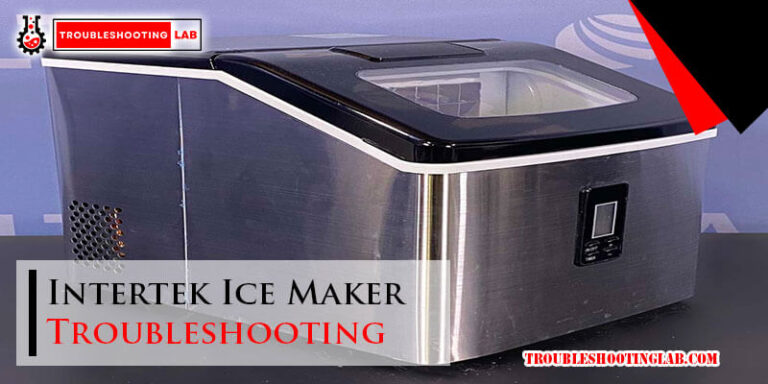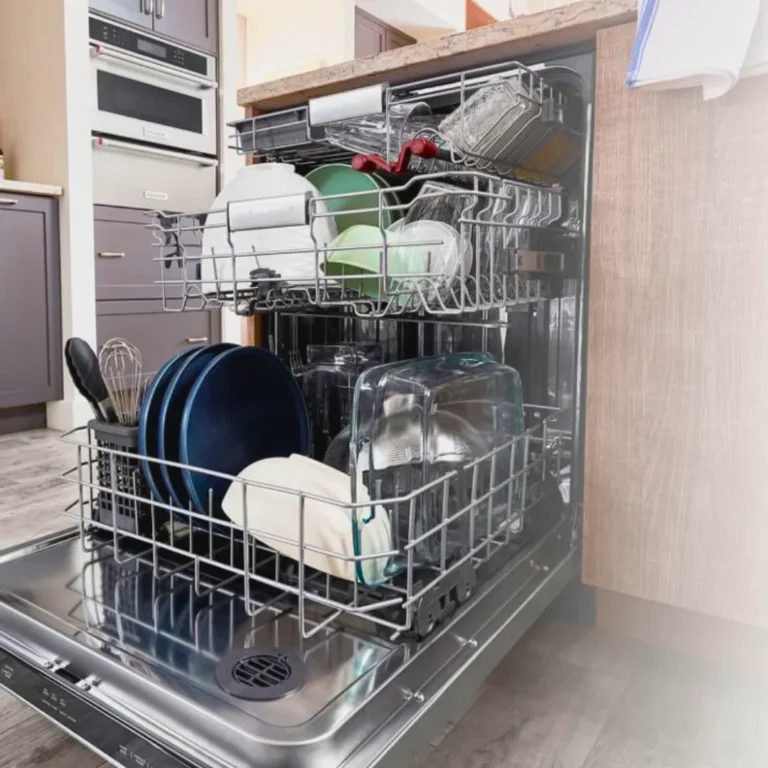Ninja Blender Troubleshooting: Solve Common Issues Quickly
Ninja blenders are popular for their power and versatility. But like any appliance, they can have issues.
Understanding common Ninja blender problems can save you time and frustration. Whether it’s a blender that won’t turn on or blades that don’t spin, troubleshooting can help. This guide offers solutions to common problems. You’ll find practical tips and easy fixes.
Knowing how to handle these issues can extend your blender’s life. So, let’s dive into Ninja blender troubleshooting and keep your appliance running smoothly.
Introduction To Ninja Blender Issues
The Ninja Blender is a popular kitchen appliance known for its versatility and power. But even the best devices can encounter issues. Understanding common problems and their solutions can save you time and stress. In this section, we’ll explore some typical Ninja Blender issues and why troubleshooting is important.
Common Problems
- Blender Not Turning On: This could be due to a power issue or a faulty motor.
- Blades Not Spinning: Often caused by obstructions or a loose blade assembly.
- Leaking: Usually from the base, this can be due to a damaged gasket.
- Strange Noises: Could indicate worn-out bearings or motor problems.
- Overheating: Occurs when the blender is overused or the ventilation is blocked.
Importance Of Troubleshooting
Troubleshooting your Ninja Blender can extend its lifespan and ensure it works effectively. Simple checks and fixes can prevent costly repairs or replacements. Regular maintenance can also keep the blender performing at its best. Here are some reasons why troubleshooting is essential:
- Cost-Effective: Fixing minor issues yourself can save money.
- Time-Saving: Quickly resolving problems keeps your cooking routine on track.
- Safety: Identifying and fixing problems can prevent accidents.
- Efficiency: A well-maintained blender works better and faster.
To help you with troubleshooting, here is a simple guide to common problems and their potential solutions:
| Problem | Possible Cause | Solution |
|---|---|---|
| Blender Not Turning On | Power issue, faulty motor | Check power supply, contact support for motor issues |
| Blades Not Spinning | Obstruction, loose blade assembly | Remove obstruction, tighten blade assembly |
| Leaking | Damaged gasket | Replace gasket |
| Strange Noises | Worn-out bearings, motor problems | Inspect bearings, consult support for motor issues |
| Overheating | Overuse, blocked ventilation | Allow to cool, clear ventilation |
By addressing these common issues, you can keep your Ninja Blender running smoothly. Regular checks and maintenance are key to a long-lasting appliance.
Blender Not Turning On
Facing issues with your Ninja Blender not turning on? This can be frustrating, especially when you need to make a quick smoothie or blend some ingredients. There are a few common reasons why this might be happening. Let’s explore some troubleshooting steps to get your blender working again.
Power Supply Check
The first step is to check the power supply. Ensure the blender is properly plugged into an electrical outlet. Sometimes, the plug might be loose or not fully inserted, causing the blender to not receive power. Also, verify that the outlet is functioning by plugging in another appliance. If the outlet works with other devices, the issue might not be with the power supply.
Inspecting The Cord
Next, inspect the blender’s cord for any visible damage. Look for cuts, frays, or exposed wires. A damaged cord can prevent the blender from turning on and can be a safety hazard. If you see any damage, do not use the blender. Consider replacing the cord or contacting customer service for a replacement. Also, ensure the cord is not tangled or twisted, which could affect the power flow.
Blender Overheating
Blender overheating can be a common problem with Ninja Blenders. It can disrupt your kitchen tasks and damage the blender. Understanding the reasons behind overheating helps in preventing it. In this blog post, we will explore the causes and preventive measures.
Causes Of Overheating
Several factors can cause your Ninja Blender to overheat. One major reason is overloading the blender. Putting too many ingredients at once strains the motor. Blending thick mixtures can also lead to overheating. These mixtures require more power, causing the motor to heat up. Another cause is extended blending time. Running the blender for long periods without breaks can cause it to overheat. Poor ventilation can also contribute. If the blender is placed in a confined space, it cannot cool down properly.
Preventive Measures
To prevent your Ninja Blender from overheating, follow some simple steps. First, avoid overloading the blender. Blend in batches if you have many ingredients. This reduces the strain on the motor. Next, cut down on blending thick mixtures. Add more liquid to your blends to make them easier on the motor. Also, limit the blending time. Do not run the blender continuously for more than one minute. Let it rest between blending sessions. Ensure proper ventilation by placing the blender in an open space. This allows the heat to dissipate quickly, keeping the motor cool. Finally, always check the user manual for specific guidelines on using your Ninja Blender.

Credit: www.ifixit.com
Unusual Noises During Operation
Ninja blenders are popular for their powerful performance. But unusual noises during operation can be concerning. These noises often indicate underlying issues. Addressing them early can help maintain your blender’s efficiency and longevity. Let’s explore common noise types and their solutions.
Identifying Noise Types
Recognizing the noise type is crucial. Different noises can signal different problems. Here are some common noise types:
Grinding Noise: This may point to worn-out blades or a damaged motor.
Whirring Sound: Often due to loose parts or an unbalanced base.
Buzzing Noise: Indicates that the motor is struggling or overheating.
Solutions For Noisy Blenders
Addressing the noise can solve the problem. Here are some solutions:
Grinding Noise: Check the blades for wear and replace if necessary. Ensure the motor is not damaged.
Whirring Sound: Tighten any loose parts. Ensure the blender is on a stable, flat surface.
Buzzing Noise: Allow the motor to cool down. Avoid overloading the blender to reduce strain on the motor.
Blender Not Blending Smoothly
Is your Ninja blender struggling to blend smoothly? It can be frustrating when ingredients remain chunky or the texture isn’t right. Several factors can cause this issue. Below, we will explore common problems and how to fix them.
Blade Assembly Issues
The blade assembly is crucial for smooth blending. Check if the blades are dull or damaged. Sharp blades are essential for efficient blending.
- Inspect the blades for any signs of wear or damage.
- If the blades are dull, consider replacing them.
- Ensure the blade assembly is correctly attached to the base.
A loose or misaligned blade assembly can lead to poor blending. Tighten the assembly if needed.
Checking Ingredients
The types and quantities of ingredients can affect blending performance. Use the right amount and types of ingredients for optimal results.
- Cut larger ingredients into smaller pieces.
- Avoid overloading the blender. Leave some space for movement.
- Add enough liquid to the blend. Liquids help create a smoother texture.
Follow these tips to ensure your ingredients are properly prepared for blending.
| Issue | Solution |
|---|---|
| Blades are dull | Replace the blades |
| Ingredients too large | Cut into smaller pieces |
| Not enough liquid | Add more liquid |
Leaking From The Base
Experiencing leaks from the base of your Ninja blender can be frustrating. This issue often disrupts your blending tasks. It may also cause a mess in your kitchen. Understanding the common causes of base leaks can help you troubleshoot effectively. Below, we discuss how to examine the seals and ensure proper assembly to avoid leaks.
Examining The Seals
The seals are crucial for preventing leaks. First, check if the seals are intact. They should not have cracks or signs of wear. Over time, seals may degrade due to regular use. Replace damaged seals to restore the blender’s functionality. Clean the seals regularly to remove food particles. This step ensures a tight fit and prevents leaks.
Proper Assembly Tips
Proper assembly is key to preventing leaks from the base. Ensure all parts are aligned correctly. The pitcher must sit firmly on the base. Twist the pitcher until you hear a click. This sound indicates that it is locked in place. Avoid over-tightening the lid. Over-tightening can damage the seals and cause leaks. Follow the user manual for correct assembly instructions. These steps help maintain the blender’s performance and prevent leaks.
Blender Jar Stuck
Dealing with a stuck blender jar can be frustrating. It disrupts your kitchen routine and can damage your blender if not handled properly. Understanding why your Ninja blender jar gets stuck and learning how to fix it can save you time and effort.
Loosening Techniques
First, unplug the blender. Safety is crucial. Then, try gently twisting the jar in the opposite direction. Sometimes, it’s just a minor twist that solves the problem. If that doesn’t work, apply some warm water around the base. Warm water can help loosen any food particles that might be causing the jar to stick.
Another method is using a rubber grip. Place a rubber glove or a thick cloth around the jar base. This gives you a better grip and more leverage. Avoid using too much force. Excessive force can break the jar or damage the motor base.
Preventing Future Sticking
To prevent your blender jar from sticking again, clean it thoroughly after each use. Residue build-up is a common cause of sticking. Make sure all parts are dry before reassembling. Moisture can cause parts to stick together.
Regular maintenance is key. Check for any signs of wear and tear. Replace any damaged parts immediately. This ensures smooth operation and longevity of your blender. Store your blender in a dry place. Humidity can cause sticking issues over time.
Cleaning And Maintenance
Keeping your Ninja Blender in top condition requires regular cleaning and maintenance. Neglecting these tasks can lead to poor performance and short lifespan. Follow these steps to ensure your blender remains efficient and safe to use.
Regular Cleaning Steps
First, unplug your Ninja Blender. Remove the blade assembly and any other detachable parts. Rinse these parts under warm water. Use a mild dish soap and a soft brush to clean the blades and other parts. Be careful with the blades; they are very sharp.
Next, clean the blender jar. Fill the jar halfway with warm water and a few drops of dish soap. Secure the lid and blend on low for about 30 seconds. This helps remove any residue stuck inside. Rinse the jar thoroughly with warm water. Dry all parts completely before reassembling.
Maintenance Tips For Longevity
To extend the life of your Ninja Blender, follow some simple maintenance tips. Regularly check the blades for dullness or damage. Replace them if necessary. Ensure the rubber gasket is intact and in good condition. A worn-out gasket can cause leaks and affect performance.
Store your blender in a dry place. Moisture can damage its electrical components. Avoid overfilling the jar, as this can strain the motor. If you notice the motor struggling, reduce the load. Give your blender a rest between heavy blending tasks to prevent overheating.
Following these cleaning and maintenance steps will help your Ninja Blender last longer and work more efficiently. Happy blending!
When To Seek Professional Help
While many Ninja blender issues can be solved at home, sometimes you need professional help. Knowing when to call a professional can save time and prevent further damage. Below, we discuss the signs of severe issues and how to find repair services.
Identifying Severe Issues
Some problems require a technician. If your blender shows the following signs, seek professional help:
- Unusual Sounds: Grinding or squealing noises.
- Smoke or Burning Smell: Indicates motor issues.
- No Power: The blender won’t turn on.
- Frequent Overheating: Even after short use.
If your blender shows any of these symptoms, do not attempt repairs yourself. You might cause more damage.
Finding Repair Services
Finding a reliable repair service can be easy. Follow these steps:
- Check Warranty: First, see if your blender is still under warranty. Many issues may be fixed for free.
- Manufacturer’s Service Center: Visit the Ninja website. They can direct you to authorized service centers.
- Local Repair Shops: Search for local appliance repair shops. Ensure they have good reviews and experience with Ninja blenders.
- Online Reviews: Look up online reviews. Websites like Yelp and Google can help you find trustworthy repair services.
Always choose a reputable service. A qualified technician ensures your blender is repaired correctly and safely.

Credit: www.youtube.com
Conclusion And Final Tips
Troubleshooting your Ninja Blender can feel overwhelming. With the right guidance, you can solve most issues quickly. Below, we will recap the key points and provide final troubleshooting advice.
Recap Of Key Points
First, always check the power source. Ensure the blender is properly plugged in. Look for any visible damage to the cord. Second, inspect the blades. Make sure they are not jammed or damaged. Third, confirm the pitcher is locked in place. The blender will not operate if the pitcher is not secured.
Fourth, clean the blender regularly. Residue buildup can cause problems. Fifth, refer to the user manual for specific instructions and troubleshooting steps. It contains valuable information unique to your model.
Final Troubleshooting Advice
If your blender still does not work, try resetting it. Unplug the blender, wait a few minutes, then plug it back in. This simple step can resolve many minor issues. If you hear odd noises, stop using the blender immediately. Inspect the blades and motor for any signs of damage.
Ensure you are not overloading the blender. Overfilling can strain the motor and cause it to stop. Use smaller batches to ensure smooth operation. Contact customer support if the problem persists. They can provide further assistance and may offer repair options.

Credit: www.youtube.com
Frequently Asked Questions
Why Is My Ninja Blender Not Starting?
Check if it’s plugged in. Ensure the lid and pitcher are aligned properly. Reset if necessary.
How Do I Fix A Leaking Ninja Blender?
Ensure the blade assembly is tight. Check seals and gaskets for damage. Replace if needed.
Why Is My Ninja Blender Making Loud Noises?
Inspect for stuck ingredients. Tighten loose components. Ensure blades are not dull or damaged.
How To Clean My Ninja Blender Properly?
Disassemble parts. Rinse with warm water. Use a brush for tough spots. Avoid dishwasher for blades.
Why Does My Ninja Blender Smell Burnt?
Overheating can cause this. Let it cool down. Check for stuck ingredients or motor issues.
Conclusion
Troubleshooting your Ninja Blender can be simple with these tips. Regular maintenance helps avoid common issues. Always check the power source first. Clean blades and jar thoroughly to ensure smooth operation. Refer to the manual for specific problems. With proper care, your blender will last longer.
Happy blending and enjoy your smoothies!

